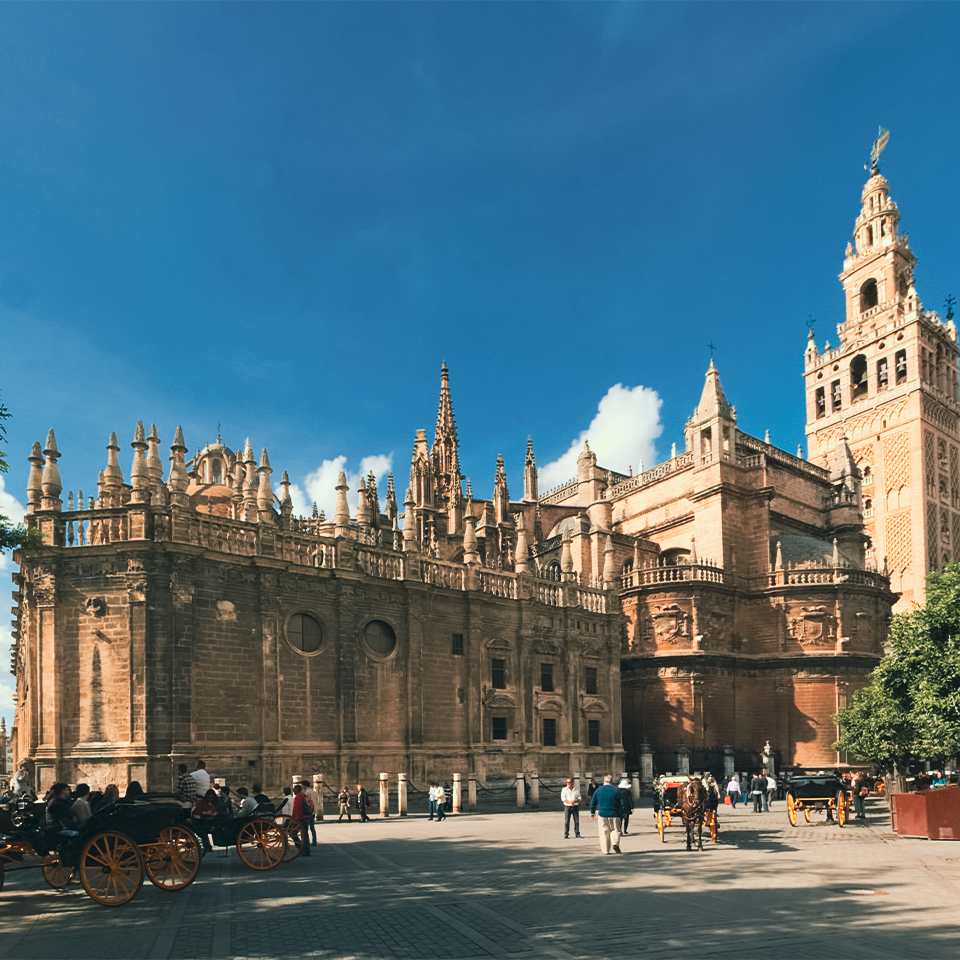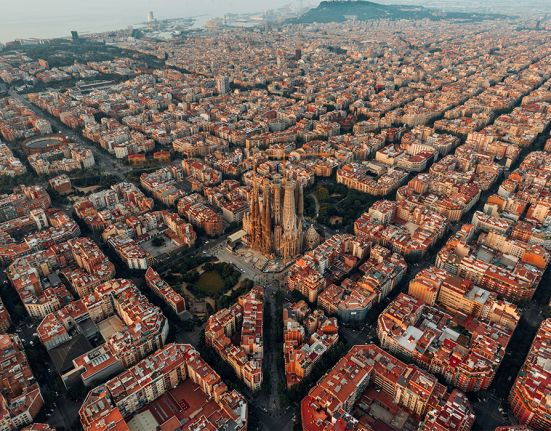Explore the Content

The Mezquita, Córdoba: A Symphony in Stone
In the winding, whitewashed lanes of Córdoba lies the Mezquita, a monument that stands as a testament to the profound cultural and religious shifts that have shaped Spain. Originally built as a mosque in the 8th century, it was transformed into a cathedral in the 13th century, after the Reconquista. This remarkable transformation is emblematic of Andalusia’s layered history, where Islamic and Christian worlds blend.
Architectural Harmony
The Mezquita’s most striking feature is its prayer hall, a vast forest of columns topped with double arches, creating an illusion of endless repetition and unity. The red and white voussoirs of the arches draw the eye upward, leading to a contemplation of the divine. This mesmerizing pattern, coupled with the soft light that filters through the windows, creates a serene and otherworldly atmosphere.
A Cultural Palimpsest
The cathedral that now occupies the center of the mosque is a jarring yet fascinating insertion, a Renaissance masterpiece grafted onto the Islamic structure. This juxtaposition of styles serves as a vivid reminder of Spain’s complex religious history, where periods of conflict and coexistence have left their mark on the nation’s cultural fabric.
Preserving a Legacy
Today, the Mezquita stands not just as a monument to past glories, but also as a symbol of the enduring power of cultural heritage. It challenges visitors to think about the nature of sacred spaces and the ways in which history and architecture can convey profound messages of unity and diversity.
Our exploration continues as we journey to Seville, a city that has been shaped by Roman, Islamic, and Christian influences over the centuries. Here, we find two remarkable monuments that encapsulate the essence of Andalusian architecture: the Alcázar and the Cathedral of Seville.

The Alcázar of Seville: A Palace of Light
The Alcázar of Seville, with its exquisite Mudéjar architecture, stands as a testament to the Islamic influence that permeates Andalusian culture. Originally a Moorish fort, the palace complex was expanded by Christian kings who were enchanted by the Islamic style of art and architecture.
A Fusion of Styles
The Alcázar’s rooms and courtyards are adorned with intricate tile work, carved wooden ceilings, and stucco decorations that speak to the craftsmanship and artistic vision of its creators. The Patio de las Doncellas (Courtyard of the Maidens) with its reflecting pool, surrounded by arches and columns, is a highlight, embodying the Mudéjar aesthetic that celebrates the beauty of geometric patterns and the interplay of light and water.
Royal Splendour
The palace has been a residence for Spanish royalty for centuries and continues to serve this function today, making it the oldest royal palace still in use in Europe. Its gardens, with their lush vegetation, fountains, and secluded paths, offer a peaceful escape from the bustling city and invite contemplation and relaxation.

The Cathedral of Seville: A Gothic Masterpiece
Just a short walk from the Alcázar, the Cathedral of Seville dominates the city skyline with its massive Gothic structure, built to demonstrate Seville’s power and wealth in the aftermath of the Reconquista.
Majestic Scale
The cathedral, one of the largest of its kind in the world, is awe-inspiring not just in its scale but in the richness of its decoration. It houses an impressive collection of art, including altarpieces, stained glass windows, and sculptures that span several centuries.
The Giralda
The bell tower, known as the Giralda, was originally a minaret before being converted into a tower for the cathedral. Climbing the Giralda offers breathtaking views of Seville and a unique perspective on the blend of cultures that define the city.
As our journey through the pearls of Andalusian architecture comes to a close, we’re reminded of the region’s unique position as a crossroads of history and culture. From the serene beauty of the Alhambra to the spiritual resonance of the Mezquita, the architectural marvels of Andalusia tell a story of convergence and coexistence. These monuments are not just stone and mortar; they are the soul of Andalusia, echoing the footsteps of those who walked their halls centuries ago and inviting us to explore the depths of our shared heritage.
In Andalusia, architecture is more than an art form; it’s a narrative woven into the fabric of history, a dialogue between the past and the present. As we leave behind the sunlit courtyards and shadowed halls of these architectural wonders, we carry with us a sense of wonder and a deeper understanding of the enduring power of cultural expression.










